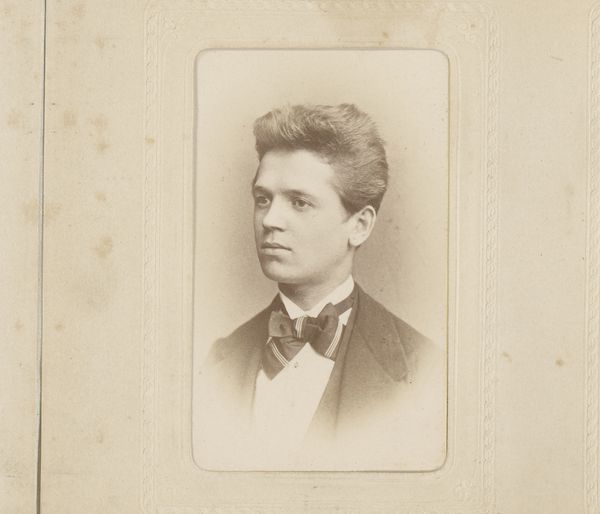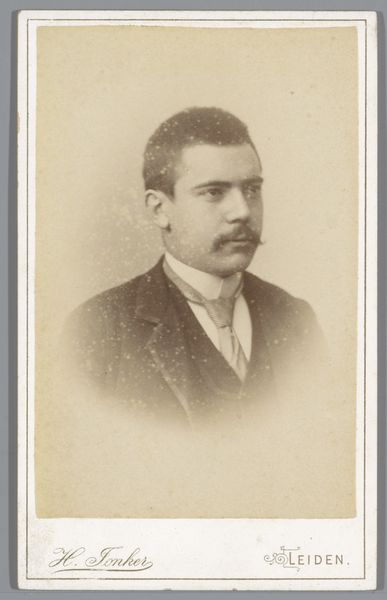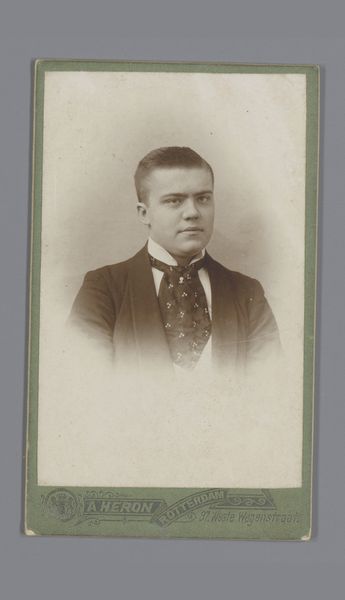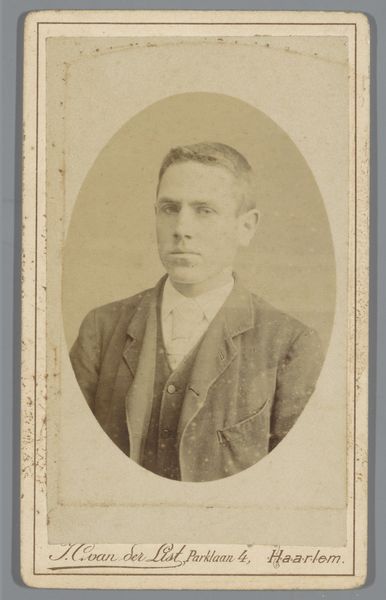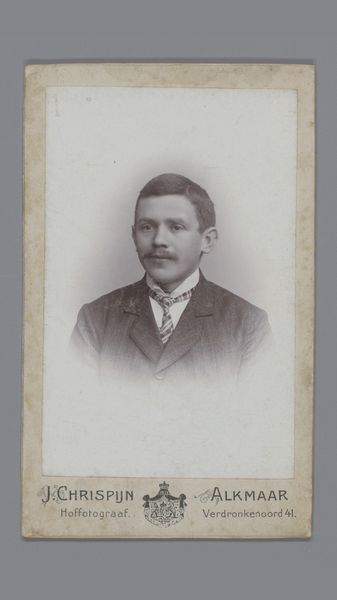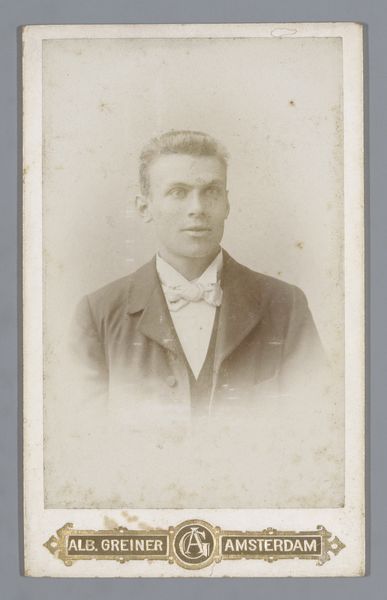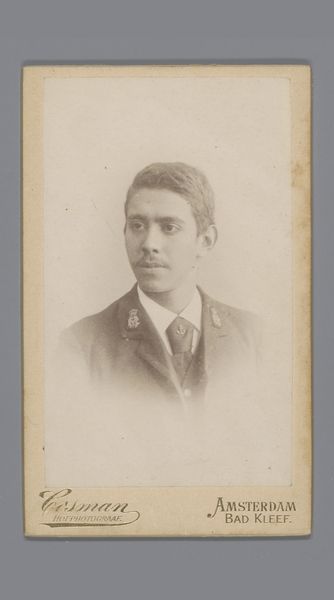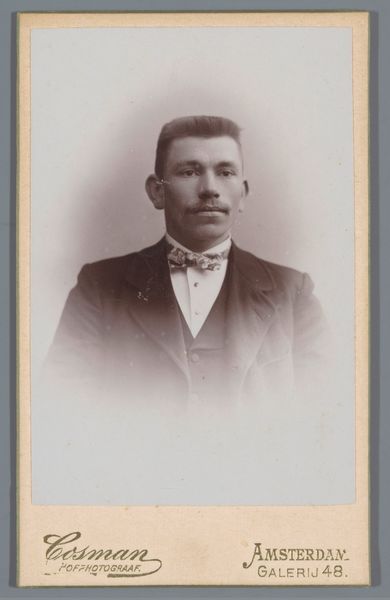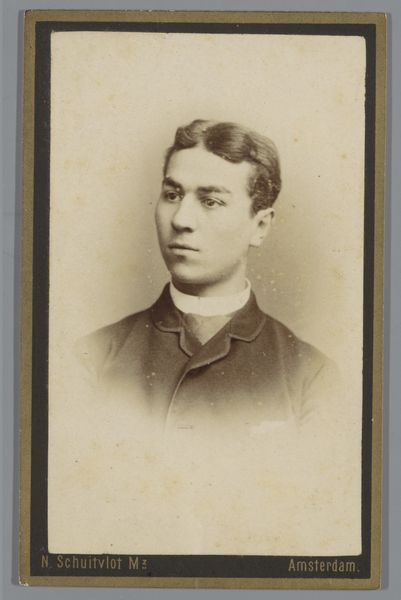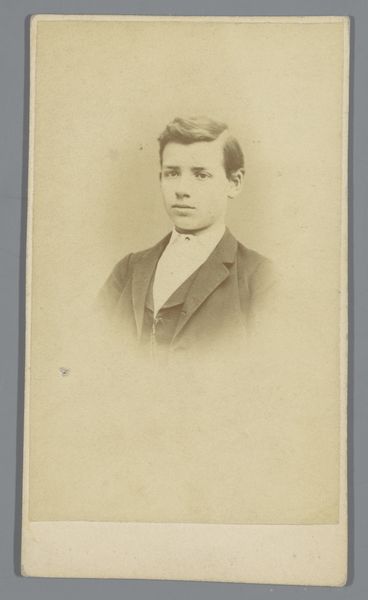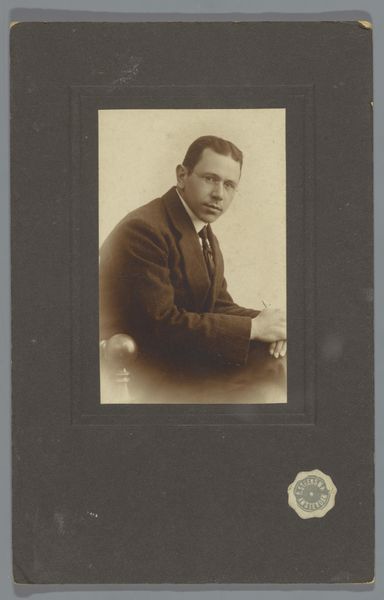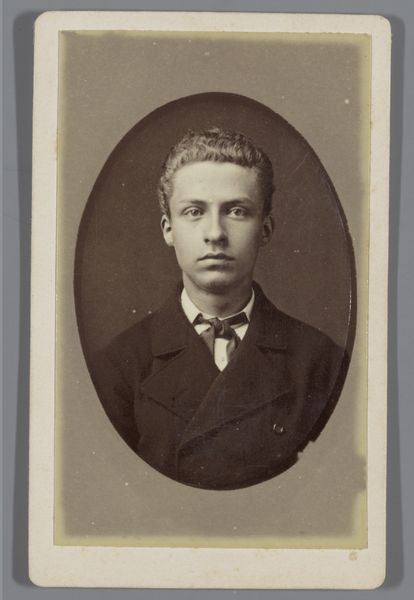
photography, gelatin-silver-print
#
photography
#
gelatin-silver-print
#
19th century
#
academic-art
Dimensions: height 103 mm, width 64 mm
Copyright: Rijks Museum: Open Domain
Editor: This gelatin silver print, "Portret van een onbekende jonge man" by Lambertus Martinus Delboy, dates sometime between 1884 and 1906. It's such a formal, almost stoic image. I'm struck by how this photographic method flattens texture compared to other portraiture of the time, like oil paintings. What can you tell me about it? Curator: Well, consider the socio-economic impact of photography at this time. The materials involved – the gelatin, the silver, the paper - are industrialized products. Suddenly, portraiture, once the domain of the wealthy, became accessible to a burgeoning middle class. What kind of statement did this accessibility make? Editor: So, this image represents a shift in who could afford to be represented? I guess it challenged traditional boundaries because portraiture was no longer exclusive to the upper class. Curator: Exactly. And think about the labor involved. Photography still required skilled operators, darkroom technicians. It wasn’t point-and-shoot as it is today. The production of this single image involved a network of people and processes, from the factory workers producing the materials to the photographer in Den Haag. The material reality is tied directly to new markets in photography. What do you make of the sitter's coat? Editor: Good point. It has quite an assertive checkered tweed pattern for such a solemn photo! Perhaps reflecting a personal aspiration beyond a rigid social status. A newly accessible material also allowed for more variety of expressions of identity, not only social class? Curator: Precisely. This portrait captures not just an individual, but a changing society, shifting class structures all facilitated by new material access. The rise of consumer culture is linked in so many ways to shifts in visual culture like this. Editor: That's given me a lot to think about – how something as seemingly simple as a photograph reveals the complex interplay of materials, labour, and social change. Curator: Indeed. Looking closely at the material conditions helps us understand art's role in reflecting and shaping the society that produced it.
Comments
No comments
Be the first to comment and join the conversation on the ultimate creative platform.

